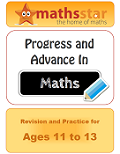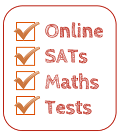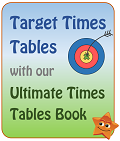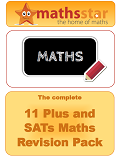
|
GCSE Foundation Maths Revision Notes
Here's a list of topics and question types to help you revise for the Foundation GCSE Maths exam. It has been updated for the new 9-1 GCSE maths for 2017.
It doesn't contain every single thing you could ever come across, but it's pretty close! We've split it into 4 levels of difficulty, but everyone's different - something we think is hard might be easy for you!
Click here to download the list as a PDF
More basic topics:
-
Find the highest common factor (HCF), find the lowest common multiple (LCM) and show a number as a product of its prime factors
-
Know what a square number, cube number and prime number are
-
Find the order of rotational symmetry
-
Add, subtract, multiply and divide fractions
-
Convert between fractions, decimals and percentages
-
Do long multiplication
-
Find the percentage of an amount
-
Name 2D and 3D shapes (these are easily forgotten!)
-
Know what congruent means
-
Find parallel lines, acute angles and obtuse angles
-
Round numbers (e.g. to the nearest ten or to 2 d.p.)
-
Write a number to a given amount of significant figures (e.g. write 24.576 to 3 sig.fig.)
-
Write and plot coordinates
-
Draw plans, side elevations and front elevations from a 3D shape
-
Answer proportion questions, e.g. when given a recipe for 12 cakes and asked to work out the ingredients for 18 cakes
-
Convert between different metric units (e.g. how many metres in a kilometre)
Lower Mid-range difficulty:
-
Find the perimeter and area of shapes
-
Find the volume and surface area of 3D shapes
-
Find angles on a straight line, at a point, in a triangle and in a quadrilateral
-
Change between mixed numbers and top heavy fractions
-
Divide a number into a given ratio, e.g. divide £1200 into the ratio 1 : 2 : 3
-
Find and use the nth term of a sequence
-
Collect algebraic terms together to simplify them (e.g. a + a + a + a + a = 5a)
-
Know how to work with negative numbers, i.e. a minus times a minus equals a plus
-
Find the mean, median, mode and range
-
Work out an estimate of a given sum
-
Complete a 2-way table
-
Multiply decimals (particularly with money problems)
-
Solve algebraic equations, like 3x + 4 = 13
-
Click here to download our Quick Fire Algebra Revision Question Sheet
Higher Mid-range difficulty:
-
Work with indices (e.g. a3 x a4, a5 ÷ a2, (a2)3, a-2)
-
Find the area and circumference of a circle, including sectors of circles
-
Expand brackets (e.g. 2(x + 4) ) and factorise (e.g. 2x²+ 4x)
-
Work out speed and use a distance-time graph
-
Describe correlation on a scatter diagram and draw a line of best fit
-
Use inequalities
-
Answer questions involving perimeter or area when the lengths are written as algebraic expressions
-
Solve algebraic equations with unknowns on both sides, like 2x + 4 = x + 8
-
Substitute values into an equation
-
Construct a stem and leaf diagram
-
Draw a line graph when given the equation of the line, e.g. y = 2x + 4
-
Work out the angles for a pie chart and draw it
-
Work out currency conversion questions
Higher level of difficulty:
-
Find the mean and median from grouped frequency tables
-
Use Standard form
-
Use Pythagoras’ theorem
-
Expand a pair of brackets, e.g. (x + 4)(x + 2)
-
Factorise simple quadratic expressions, e.g. x² + 5x + 6
-
Solve linear simultaneous equations
-
Find probability and use probability tree diagrams
-
Use bearings
-
Rotate, reflect and translate shapes on a coordinate grid and describe a single transformation
-
Enlarge a shape by a scale factor, including fractional scale factors
-
Know and use the rules for angles on parallel lines (alternate, corresponding, opposite, co-interior)
-
Use compound interest
-
Find the exterior and interior angles of a polygon
-
Use trigonometry for right-angled triangles (SOH CAH TOA)
-
Know the exact values of sin θ and cos θ for θ = 0°, 30°, 45°, 60° and 90°; know the exact value of tan θ for θ = 0°, 30°, 45° and 60°
-
Work out direct and indirect proportion
-
Construct triangles, perpendicular bisectors and angle bisectors using a pair of compasses
-
Work out density and pressure
-
Understand y = mx + c and use it to find the equation of a line and the equations of parallel lines
If you don't have a GCSE workbook to use for practice, you might find the CGP workbook handy.

|



 Perfect for 11 Plus & SATs Revision
Perfect for 11 Plus & SATs Revision
|